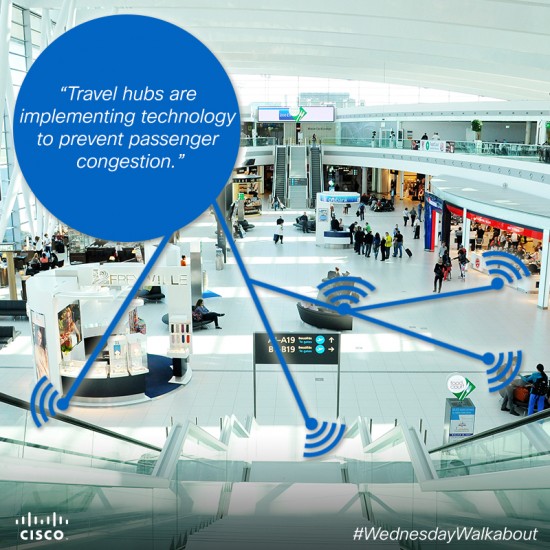Co-authored with Dani Schrakamp
Highways, bridges, railways, mass transit, ports, airports, and their cyber networks are all a part of critical transportation infrastructure, which is essential to the daily function of 21st century society. As urban population centers grow, so does the demand on transportation infrastructure. More and more commuters are shifting from using roadways to rail, bus and other means of public transportation.
This shift is changing the role of public transportation systems and the station hubs that support them. Commuters demand full connectivity – transportation operators must assume that everything and everyone needs to be connected to a network. But the growth of connected devices within transportation ecosystems dramatically increases the number of potential attack vectors. And as we open our transportation networks – both physical and digital – to more points of connectivity, concerns of vulnerability to increasingly sophisticated direct and indirect cyber attacks are on the rise.
The Internet of Everything is forming the foundation of the digital transformation of connected roads, rails, buses, airports, and ports being built all around the world. Improving global transportation systems increases mobility and improves safety and security for millions of people, in an environmentally conscious manner. Transportation agencies and organizations are approaching digital strategies that are changing the overall passenger experience, improving productivity, and generating new revenue streams; changing the traditional of the industry.
In today’s post our digital citizen is really on the move. It’s that time of year when everyone, their mother, and your brother are all hitting the roads, the airports, and trains, heading for vacation.
Rushed packing is complete; our digital citizen is ready to start the journey toward work-free liberation. But travel – by car, train, and plane – is challenging, especially during the holiday rush, right? Wrong. Not in the world where digitized transportation systems are enabling a seamless passenger experience.
First, our citizen must head to the airport by car. Despite the time of year, traffic is efficient because the transportation authorities are on high alert to keep traffic and transit running smoothly. Much like Utah’s Department of Transportation that has implemented digital initiatives that have created a highly granular understanding of transportation systems and improved daily management of the roadways and in the infrastructure planning process.
But a smart phone alert just interrupted the citizen’s smooth sailing, there’s a pattern of slow traffic up ahead due to the conveniently planned construction project. Not to worry, a slight reroute around the alert’s mapped view of the construction zone and we’re cruising once again. Like over 80 percent of Texas drivers, our citizen was pleased with preemptive notifications that allowed for proactive traffic avoidance.
Our digital citizen has made it to the airport. And this is typically about the time that one would spot it, enemy number one: the dreaded lines that snake around the airline counters and the security checkpoints. Not today and not for our digital citizen. Travel hubs, like Copenhagen Airport, are adopting technology to monitor and prevent passenger congestion, allowing for less time in queue and more time to relax, shop, and find some pre-flight snacks.
A smooth flight and a catnap later, and our citizen has arrived at their almost-final destination. The citizen then hops on the next mode of transportation, the train.

Cities like Dubai are adopting digital strategies to fit the growing transit needs as more and more community members are turning to public transportation for means of everyday travel. Snoozing again upon feeling comfortable with the safety of the journey, because like Metrolink in Los Angeles, this railway is using technology to avoid accidents and complications. The onslaught of train riders awoke our citizen. With the public transit system providing reliable and plentiful timetables, clean trains, and simple ticketing procedures, why wouldn’t the train be packed? At the completion of the journey, like 85-90 percent of Seoul travelers, our citizen was very satisfied with the overall public transportation experience.
Communities are learning how to adjust the critical needs for their transportation networks as they evolve into centers of human coalescence and interaction. This trend is setting up public transportation and mass transit to be a main artery of the world’s smartest cities, which aim to improve the quality of life of citizens, residents, and visitors, while supporting economic development and attracting business and workforce talent.
Stay tuned for next Wednesday’s post to experience a day on the bay with our digital citizen. And be sure to check back each week as we explore new themes, challenges and observations.

Additionally, you can click here and register now to get your IoE questions answered on how to become the next digital community.
Finally, we invite you to be a part of the conversation by using the hashtag #WednesdayWalkabout and by following @CiscoGovt on Twitter.
For more information and additional examples, visit our Cisco Connected Transportation, Smart+Connected Communities page and our Government page on Cisco.com. Enjoy the Wednesday walkabout!

This year again Cisco is rated high on top of Navigant Research Leaderboard Report examining the strategy and execution of 16 leading smart city suppliers with the capacity to provide leadership on large-scale smart city projects spanning multiple operational and service areas.
More at http://www.prnewswire.com/news-releases/navigant-research-leaderboard-report-smart-city-suppliers-assessment-of-strategy-and-execution-for-16-smart-city-suppliers-300133184.html.
This is amazing! thanks for posting!